Abstract
A new strain of Neurospora crassa which exhibits a rhythm of conidiation when growing along an agar surface in a growth tube is described. The rhythm has been shown to be circadian for it meets the following criteria: A) the period under constant environmental conditions in the dark is about 24 hours (22.7 hours at 25°); B) the period is relatively temperature-independent (Q10 is between 0.95 and 1.21 for temperature range of 18 to 35°); C) the rhythm persists in continuous darkness at constant temperature for a minimum of 14 days without damping out; and D) the phase of the rhythm can be shifted by a single brief exposure to light. The sensitivity of this strain to light has been demonstrated further by the entrainment of the rhythm to a period of 24.0 hours using a suitable light-dark regime, and by the inhibition by light of the appearance of a rhythm; i.e., continuous conidiation occurs when the strain is subjected to continuous light. The new strain is compared to 2 other strains of Neurospora which also express a rhythm, patch and clock.
Full text
PDF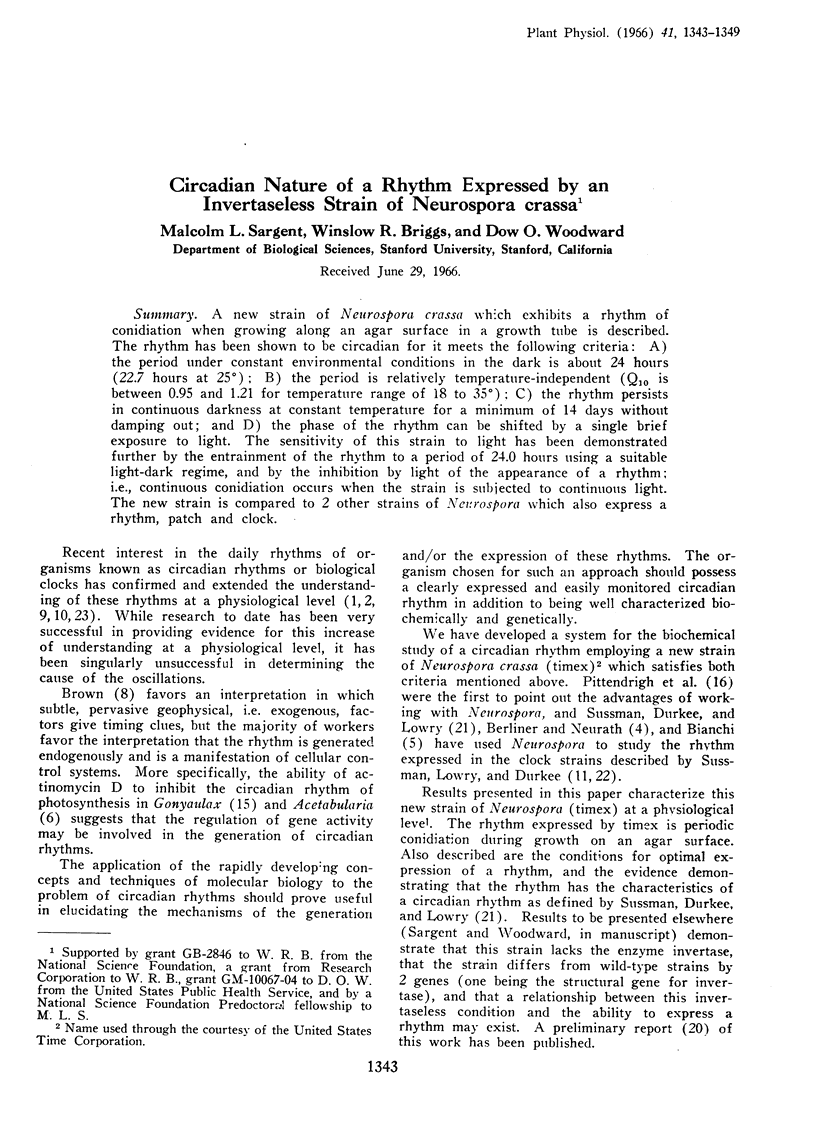

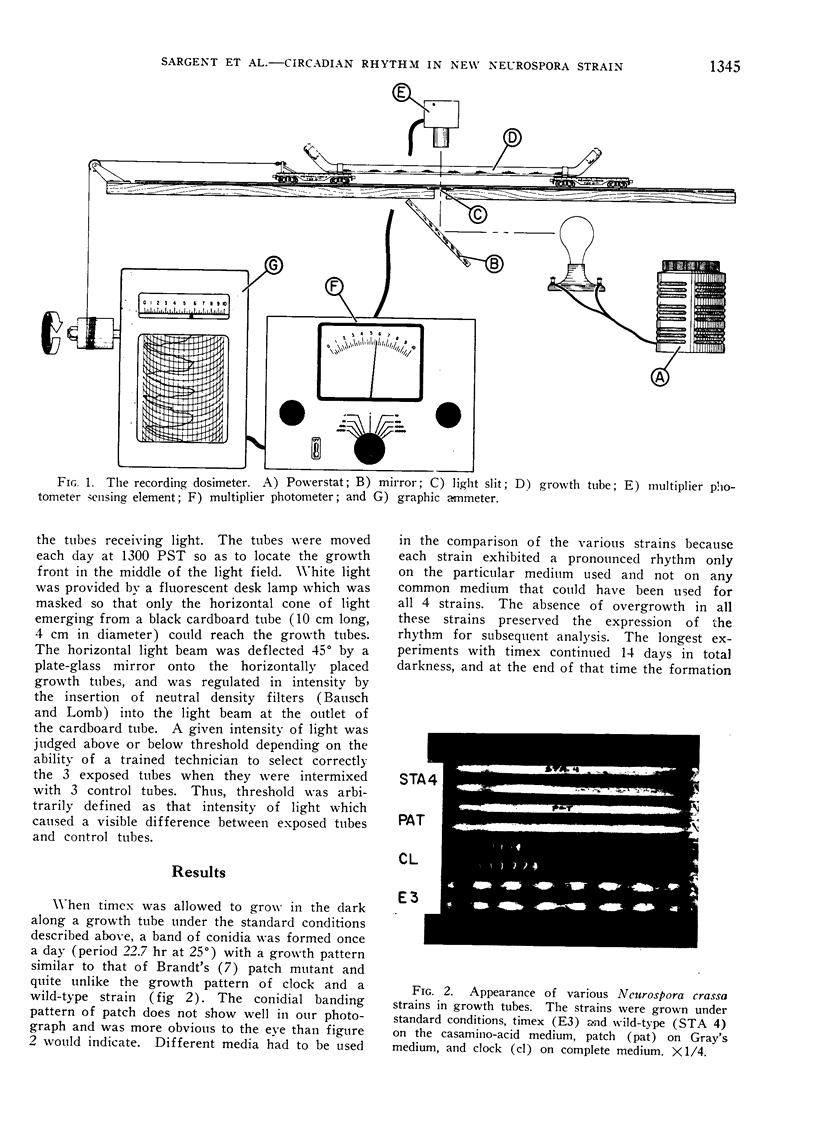
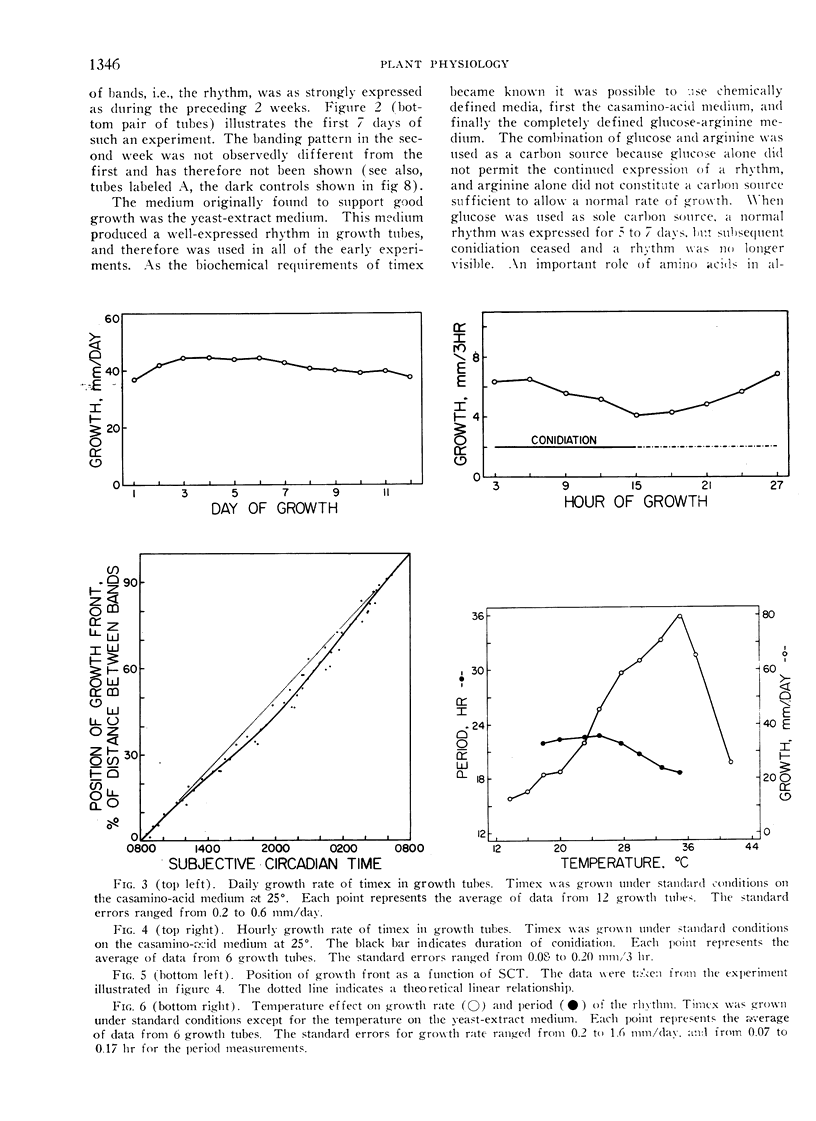
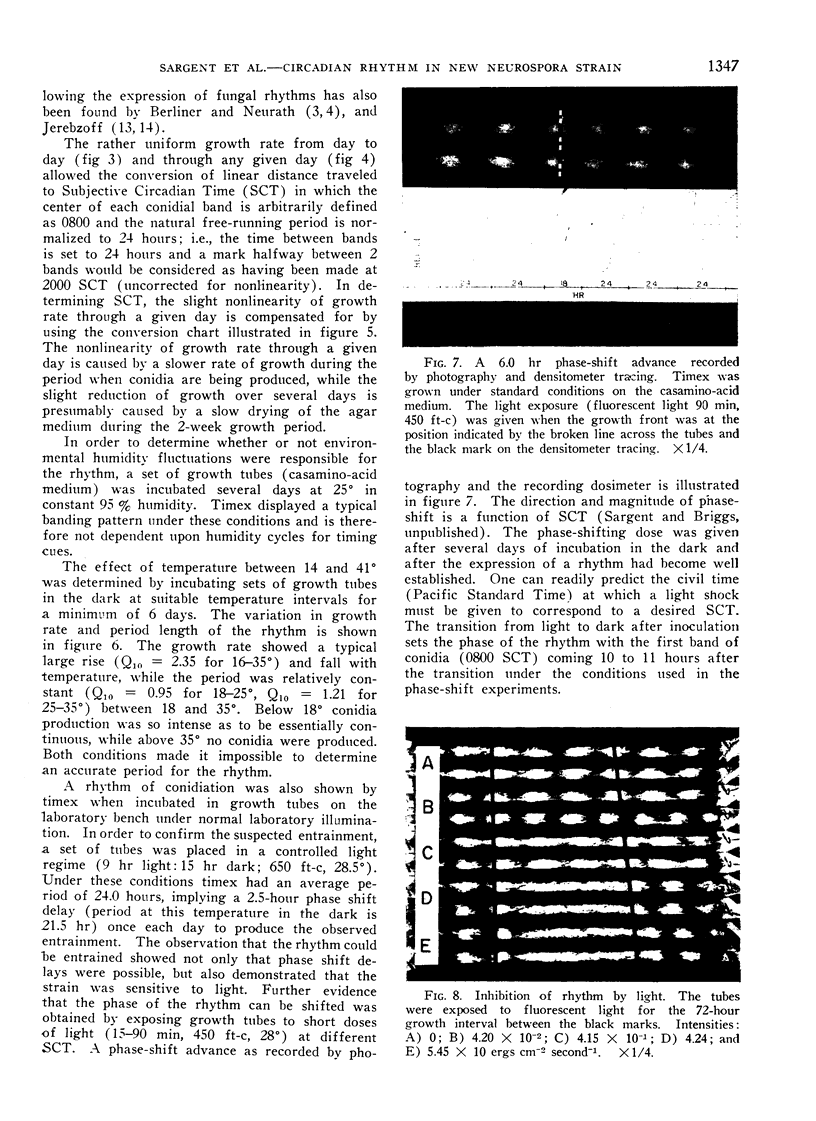
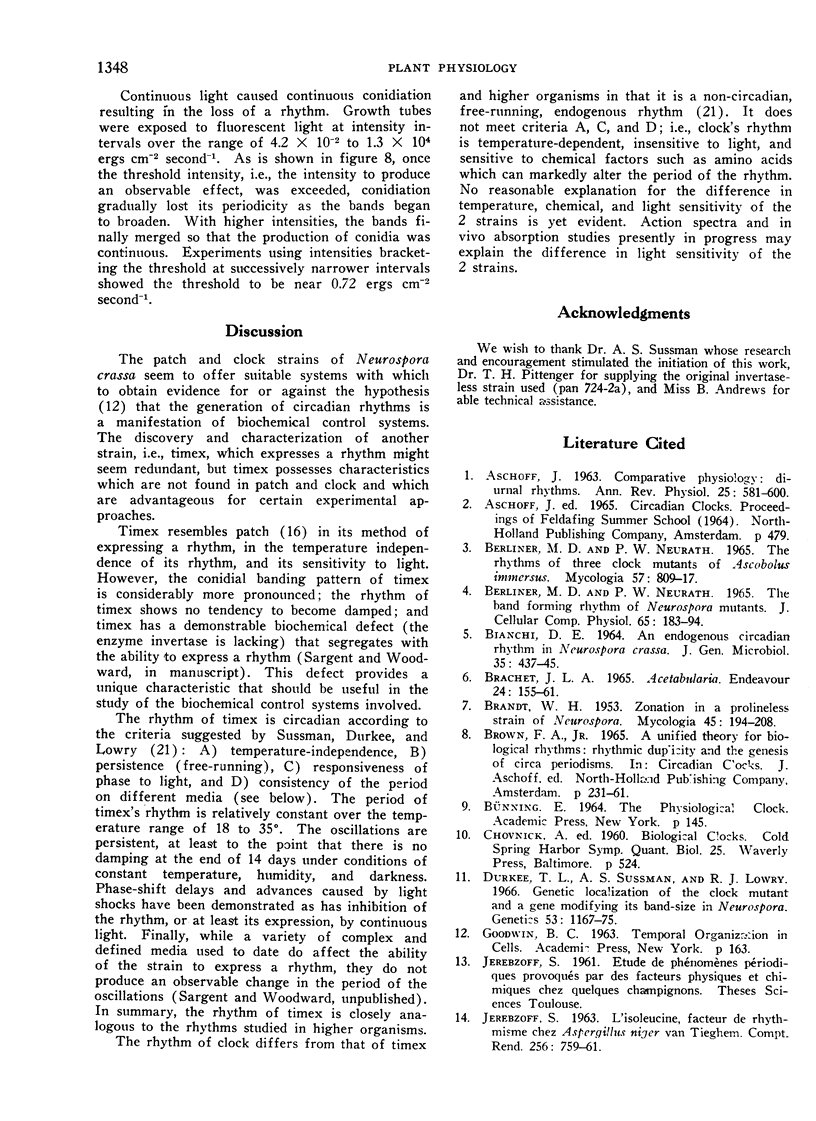
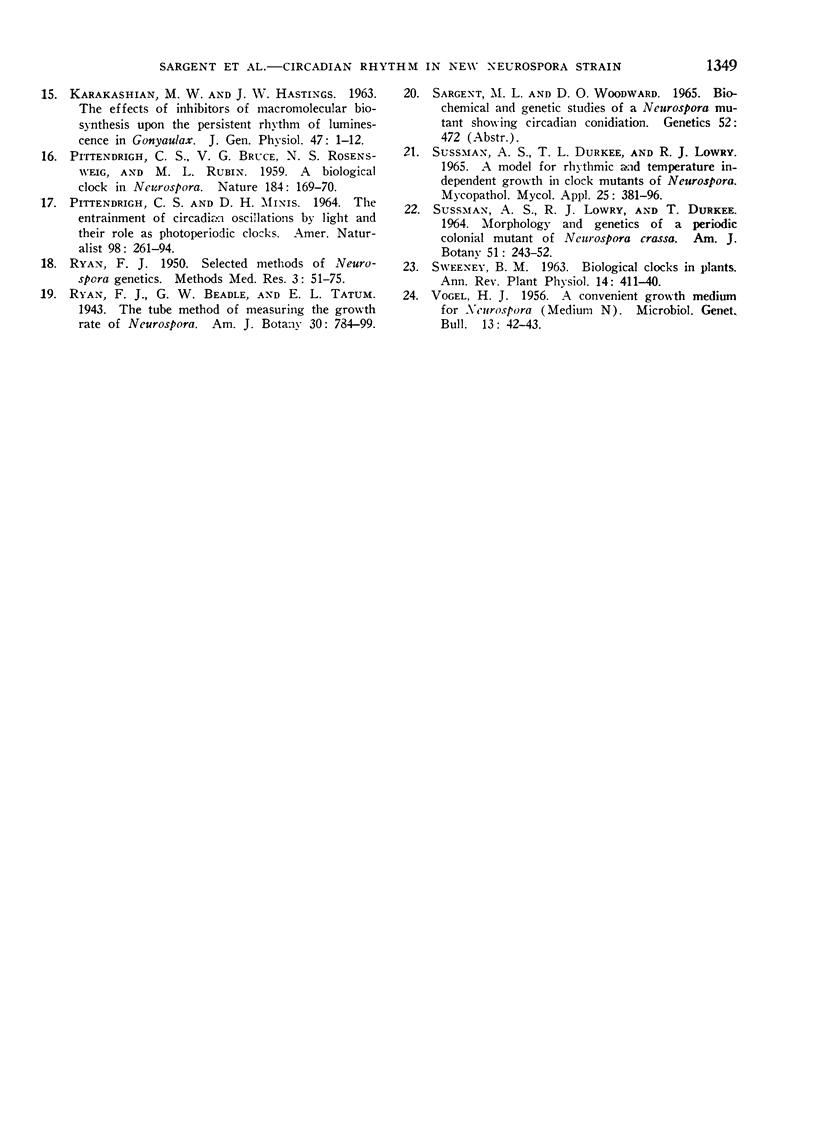
Images in this article
Selected References
These references are in PubMed. This may not be the complete list of references from this article.
- ASCHOFF J. Comparative physiology: diurnal rhythms. Annu Rev Physiol. 1963;25:581–600. doi: 10.1146/annurev.ph.25.030163.003053. [DOI] [PubMed] [Google Scholar]
- BIANCHI D. E. AN ENDOGENOUS CIRCADIAN RHYTHM IN NEUROSPORA CRASSA. J Gen Microbiol. 1964 Jun;35:437–445. doi: 10.1099/00221287-35-3-437. [DOI] [PubMed] [Google Scholar]
- Berliner M. D., Neurath P. W. The band forming rhythm of Neurospara mutants. J Cell Physiol. 1965 Apr;65(2):183–193. doi: 10.1002/jcp.1030650206. [DOI] [PubMed] [Google Scholar]
- Brachet J. L. Acetabularia. Endeavour. 1965 Sep;24(93):155–161. [PubMed] [Google Scholar]
- Durkee T. L., Sussman A. S., Lowry R. J. Genetic localization of the clock mutant and a gene modifying its band-size in Neurospora. Genetics. 1966 Jun;53(6):1167–1175. doi: 10.1093/genetics/53.6.1167. [DOI] [PMC free article] [PubMed] [Google Scholar]
- KARAKASHIAN M. W., HASTINGS J. W. THE EFFECTS OF INHIBITORS OF MACROMOLECULAR BIOSYNTHESIS UPON THE PERSISTENT RHYTHM OF LUMINESCENCE IN GONYAULAX. J Gen Physiol. 1963 Sep;47:1–12. doi: 10.1085/jgp.47.1.1. [DOI] [PMC free article] [PubMed] [Google Scholar]
- Sussman A. S., Durkee T. L., Lowry R. J. A model for rhythmic and temperature-independent growth in 'clock' mutants of Neurospora. Mycopathol Mycol Appl. 1965 Apr 14;25(3):381–396. doi: 10.1007/BF02049924. [DOI] [PubMed] [Google Scholar]






